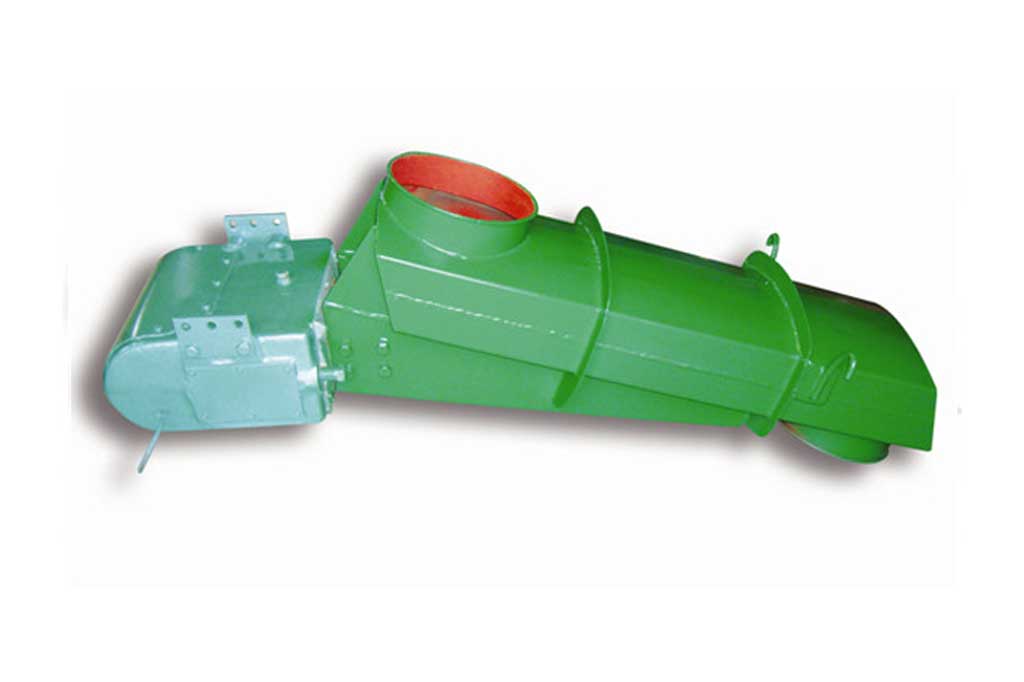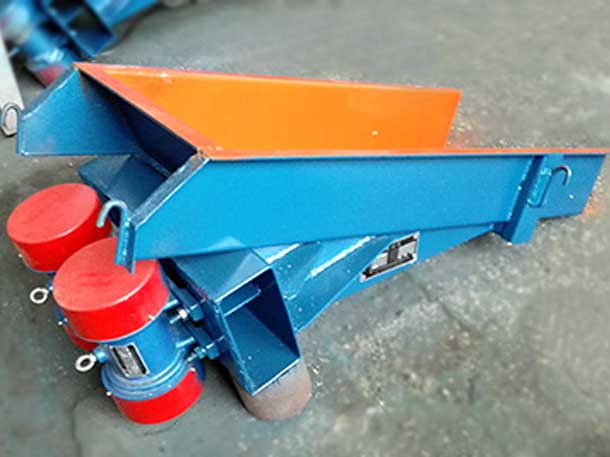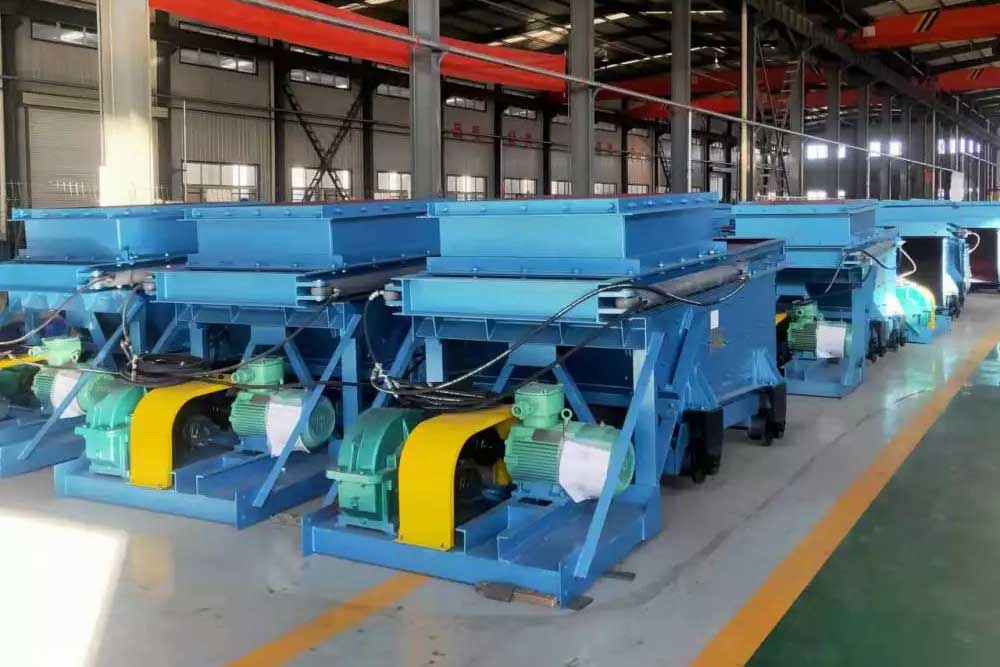Vibrating feeders are widely used in metallurgy, coal, electric power, chemical industry, building materials, light industry, grain, and other industries, and are matched with other equipment to realize feeding, feeding, batching, quantitative packaging, and process automation.
Application of vibrating feeder
- In metallurgical mines, it is mainly used for ore drawing, reloading and loading, ore dressing, crushing, and feeding operations;
- In coal mines, it is mainly used for reloading under the mine, reloading under the skip, coal blending under the raw coal bunker, loading under the clean coal bin, and uniform feeding of the washing machine;
- In the packaging industry, is mainly used for quantitative packaging scale feeding mechanisms and quantitative packaging systems;
- In cement production, it is used as the feed material of cement in concrete mixing stations;
- In the chemical industry, it is mainly used for dosing for fertilizer production.
Four stages of development of vibrating feeder in China
In the early 1950s, K-type reciprocating feeders driven by connecting rods and eccentric shafts were widely used in mine production, especially underground coal mines.
Reciprocating feeder
The reciprocating feeder has a simple structure, large power consumption, heavy equipment, small processing capacity, and uneven feeding in an indirect pile. However, the reciprocating plate feeder requires less maintenance, is durable, requires a low height for layout, and has no strict requirements on the physical properties of the material such as particle size composition and external moisture. With the improvement of mine mechanization, this kind of vibrating feeder can no longer meet the needs of production.
The reciprocating feeder produced by UHM is used for feeding coal or other loose granular materials with small abrasiveness and viscosity and unloads the materials in the storage bin or pit continuously and evenly to the transportation equipment or other equipment, vibrating screen equipment. Read More: Reciprocating Plate Feeder, Basics, 2 Diffs, Apps
Electromagnetic vibrating feeder
In the 1960s, with the development of production technology and the introduction of foreign advanced equipment, electromagnetic vibrating feeders appeared and were quickly widely used.
The electromagnetic vibrating coal feeder belongs to the two-mass resonance type. Compared with the K-type reciprocating feeder, it has the characteristics of large processing capacity, compact structure, light weight, stepless speed regulation and low power consumption. It has been promoted throughout the country and is quite popular. Popular with users.

UHM vibrating feeders with electromagnetic drive are used for bin extraction and for conveying of bulk material. More Detail: Electromagnetic Vibratory Feeder: Basics, 5 Install Steps
After use, it is found that there are many faults in the electromagnetic vibrating feeder, such as the armature is damaged, there is no amplitude and no feeding, the leaf spring is broken, the bolts of the leaf spring are loose, the size of the air gap between the iron core and the armature, and the number of leaf springs are not adjusted properly. It is easy to cause the current to increase, the amplitude to decrease, and not to operate normally. In severe cases, the iron core will collide and cause damage to the iron core and coil.
Motor vibrating feeder
In the mid-1980s, China began to produce motor vibrating feeders (GZC/MZGG} 7 motor vibrating feeders use vibrating motors as the excitation source, and are designed according to the principle of dual-motor self-synchronization. There are problems such as damage, tank vibration cracking, and heavy maintenance workload, but through practical application, it has been proved that its performance is better than that of the electromagnetic vibrating feeder.

Practical and easy to use, UHM single-mass dual motor vibratory feeders provide linear motion and are a practical option for many applications.. More Detail: Motor Vibratory Feeder, 6 Features, 5 Tips of Productivity
Grizzly Feeder
In the late 1980s and early 1990s, a variety of new vibrating feeders came into being. The grizzly feeder, which is effectively combined with the heavy-duty apron feeder and the screening machine, has a novel structure and has dual functions of screening and conveying. , suitable for industrial sectors such as mineral processing, building materials and chemicals, suitable for feeding ferrous and non-ferrous metal ores and building stones before coarse crushing.
Final words
Due to the structural problems of the traditional vibrating feeder, when the vibration frequency is too high, the elastic body of the trough will vibrate strongly and transmit harsh noise. The open-air operation mode will inevitably cause dust spillage.
With the continuous advancement of environmental protection policies and increasingly stringent production emission standards, feeder manufacturers are forced to pay attention to environmental protection issues, improve product structure, and produce feeder products with low noise, low pollution, and low energy consumption.
The penetration of artificial intelligence in various industries is accelerating, and technical methods such as 5G, big data, and cloud computing provide more possibilities for vibrating feeders to improve the level of intelligence.
Read More: Feeder Wikipedia
As an interface between trucks or plant stockpiles and the processing system, Apron Feeders provide steady, controlled feed for downstream processing in cement and mining applications. Read More: Apron Feeders, Everything You Need to Know, Best Guide 2023
Intelligent feeding equipment has appeared one after another, and the transportation volume can be adjusted according to the characteristics of different materials to achieve the purpose of continuous and uniform feeding. Through intelligent monitoring, intelligent prediction of faults, real-time display of working data, reducing the probability of failure and subsequent maintenance difficulty.
